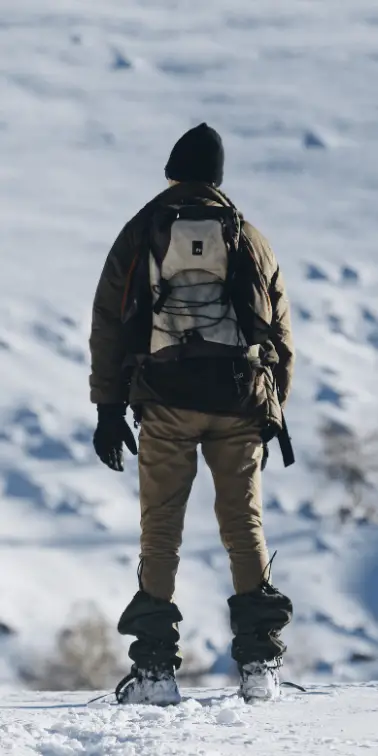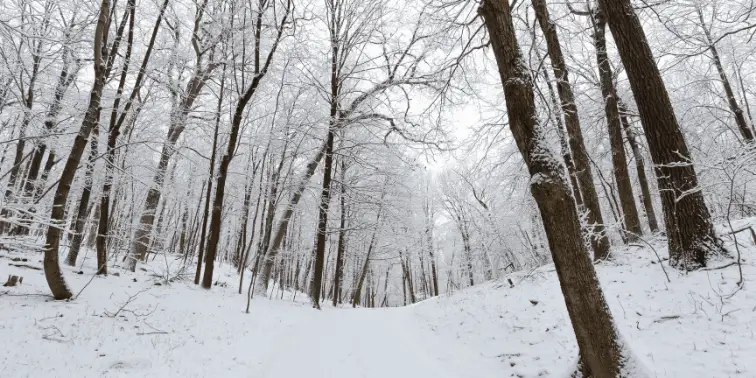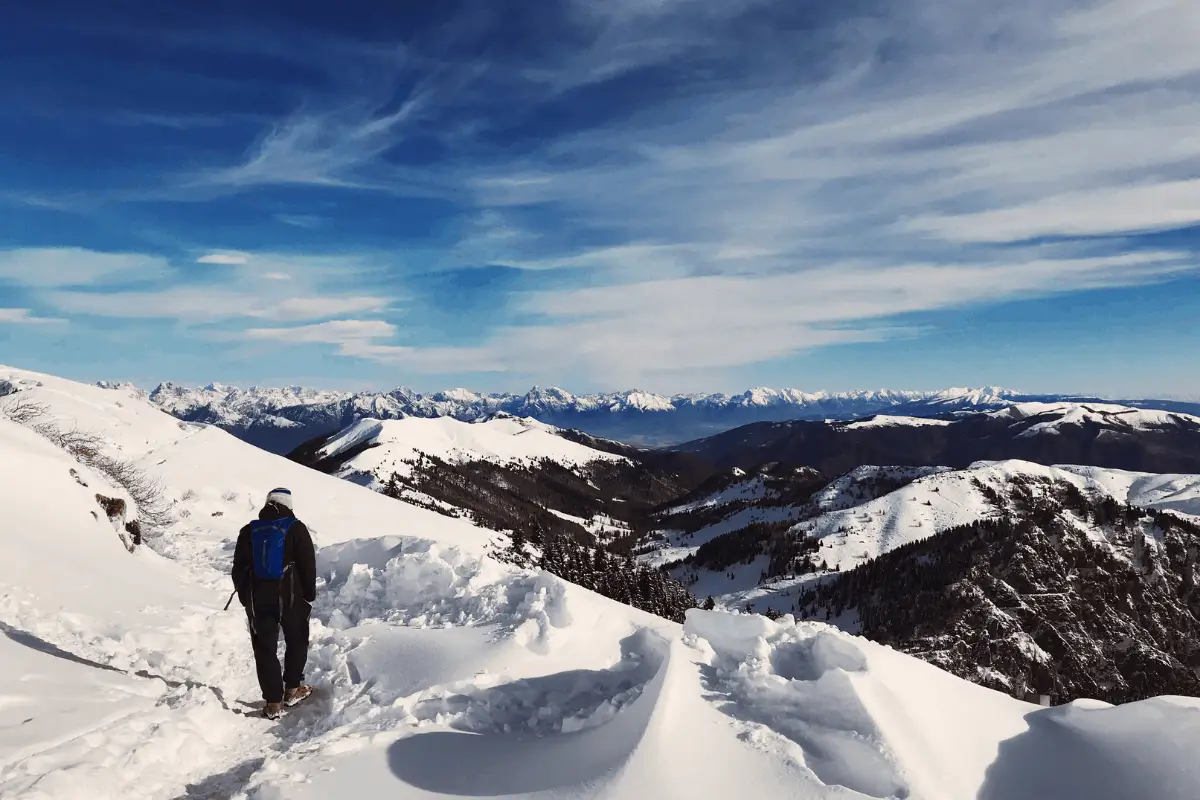Hiking in the snow is one of the purest things you can do. The captivating silence and enchanting beauty are undeniable and something you surely want to experience at least once during your lifetime. While it might seem more daunting than regular hiking, it is a great way to get that important vitamin D some of us lack during the long winter months.
Hiking in the snow can be easy and fun as long as you have the right mind frame, adventurous spirits, and take caution when necessary. Keep reading to learn more about hiking in the snow, how to stay safe, and what to wear to stay warm and comfortable.
Before we get into what to wear when hiking in the snow, we want to quickly answer an even more important question:
Is Hiking in the Snow Safe?
Absolutely! When you wear the right gear and take the right precautions, hiking in the snow is super safe and dare I say enjoyable! As with everything, there are certain dangers that come along with winter hiking, but as long as you know what to be aware of, you can be prepared for them.
Things to be prepared for:
- Quickly changing weather
- Slick/icy spots, especially on an incline or decline
- Wind and blowing snow from the wind
- Dehydration, believe it or not, dehydration is a bigger threat in cold weather
- Thin ice on streams or rivers
Essential Attire for Hiking in the Snow
The way you dress will make or break winter hiking for you. If you dress properly, I promise you’ll experience the magic of hiking in the snow. Remember to dress in layers and stay dry!

While getting dressed for your hike, keep in mind how the trail is, what the temperature is, if you’re sticking to a trail of “off-roading”, if it’s still snowing, if you’re crossing streams/rivers, etc.
You’ve probably always heard people say dress in layers, but let’s break that down and make sure we really know what layering means.
Upper Body
Base Layer:
The purpose of a base layer is to keep your skin dry, also known as moisture-wicking. When you are buying base layers, look for a top made of synthetic fibers. Look for things like polyester, Capilene®, polypropylene, or polyester blend. Your base layer should be somewhat formfitting but comfortable. I personally prefer tops that have holes for your thumbs and lower neckline or one I can zipper.
Mid Layer:
Your mid-layer is meant to retain your body heat and keep you warm. In general terms, the thicker or puffier the mid-layer, the warmer it is. Materials like fleece, polyester, and down are all nice options for your mid-layer. Chunky pullover sweaters, fleece sweatshirts, and fun flannels are perfect mid-layers and you can use them for everyday use as well.
If you think you need or want one more layer before the outer layer you can always add a vest to keep your torso extra warm but not restricting movement in your arms.
Outer Layer:
The outer layer sometimes referred to as the shell, is designed to protect you from the snow and wind. You want to ensure your outer layer is at least water repellant, if not totally waterproof. Your outer layer is super important and is key to keeping your top half dry.
I have two hiking jackets that I primarily use in the winter a thinner shell one for warmer winter days that blocks the wind and is water repellent and a thick puffy one for colder climates or if it’s still snowing.
Lower Body
There are a lot of options for the lower body but fleece-lined leggings or a polyester blend yoga pants work the best. You also have the option to wear snow pants over top for extra warmth or to ensure you don’t get wet.
Footwear
The number one rule here is to keep your feet dry, so don’t wear cotton. Heat Holders and Stance Snow Socks are great options for socks but you also need a good, sturdy pair of hiking boots. They definitely need to be water-resistant, even better if they are waterproof.
If you don’t want a full-on boot, then check out these shoes from La Sportiva. They’re almost a hybrid between a boot and trail running show. They’re waterproof and work great for most snowy hikes.
However, if you plan to go into deeper snow or into extreme cold, you will need a special arctic boot.
Hands
Some people like to hike in thin, fleece-lined gloves while others prefer waterproof gloves and some people don’t wear them at all. Even if you don’t plan on wearing them, you should always have a set of gloves in your backpack.
Head and Face
Whether you prefer a beanie or earmuffs, it’s really important to keep your ears warm. They are easily susceptible to frostbite, as is your nose. On super windy days, you may even want a full face mask or use a bandana to cover your nose.
Extra Items for Backpack

You’re likely to get a little wet when you’re hiking in the snow. I always pack some extra stuff in my hiking pack ( also my carry-on 😉!) Whether you have to change mid-hike or when you get back to the car, it’s always nice to feel “fresh and dry. In my pack, I always have extra socks, water, and snacks, a portable phone charger, pocket knife, bandanas, and baby wipes.
If not wearing snow pants, ill make sure they are in my pack before setting off and usually an extra pair of gloves.
Winter Hiking Essentials
- Extra food and water
- Pocket knife
- Fully charged phone and/or portable charger
- Headlamp
- Water-resistant/waterproof boots
Non-Essentials That are Nice to Have for Hiking in the Snow
- Sunblock
- Sunglasses/goggles
- Hand and foot warmers
- Microspikes
What to Know Before You Go
If you are hiking in a state or national park, make sure the trails are open.
- Start early enough in the day so you don’t end your hike in the dark.
- Don’t hike alone if you don’t have to.
- ALWAYS keep your feet dry
Don’t Forget…
As with any hike, let someone know where you’re going and when you expect to return. Be thoughtful of other hikers and take your trash with you. If you’re hiking with your dog, keep them on leash and pick up after them. Of course, in the end, don’t forget to enjoy the beauty.


